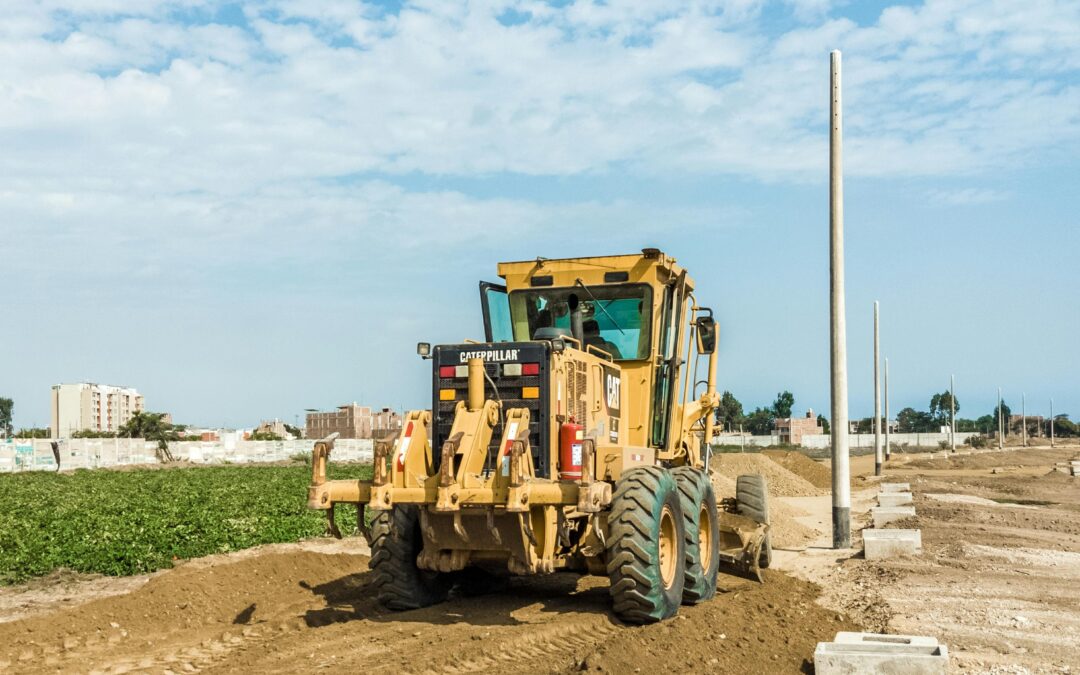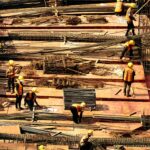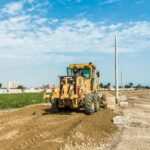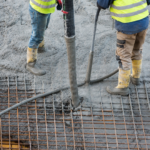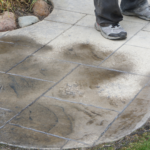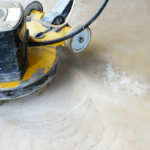Did you know that improper grading can reduce the lifespan of a concrete structure by up to 50%? According to the National Ready Mixed Concrete Association (NRMCA), poor preparation of the ground beneath concrete is one of the most common causes of premature cracking and erosion in concrete projects. In places like Greensboro, NC, where soil conditions vary and weather patterns bring frequent rain, ensuring proper grading is critical to the success of any concrete project.
This might sound like a technical issue, but the truth is simple: proper grading can prevent water from becoming your concrete’s worst enemy. Whether you’re working on a driveway, sidewalk, or patio, how the ground is prepared beforehand can make all the difference. Let’s take a closer look at why this matters and what you can do to ensure your project is built to last.
Why Grading Matters for Concrete Projects
Before pouring concrete, it’s essential to prepare the ground. Grading ensures the ground slopes away from the structure, preventing water from pooling and causing damage. When done correctly, grading helps water drain properly, supports the weight of the concrete, and prevents cracks and settling.
Improper grading, on the other hand, can lead to serious issues:
- Cracking: Water that collects underneath concrete will cause the soil to shift. This movement leads to cracks.
- Erosion: Water that flows towards the structure can wash away soil, leading to erosion that weakens the foundation.
- Settling: Uneven ground may cause sections of concrete to sink over time, creating dips or uneven surfaces.
These issues are particularly common in areas like Greensboro, NC, where clay soil and heavy rainfall create challenging conditions for concrete projects.
The Role of Greensboro’s Soil and Weather
Understanding Local Soil Conditions
Greensboro has a variety of soil types, but the dominant type is clay. Clay soil is known for holding water, which can create problems when laying concrete. Clay expands when wet and contracts when dry, putting pressure on the concrete slab. Without proper grading, this movement can lead to cracking and uneven surfaces.
For example, if the ground isn’t graded to direct water away from the concrete slab, the water may pool underneath, causing the clay to expand and push up against the concrete. Over time, this pressure weakens the structure, leading to expensive repairs.
How Rainfall Impacts Concrete
Greensboro experiences an average of 45 inches of rain annually, higher than the national average. This means proper grading is even more important here than in drier areas. If the rainwater is not directed away from the concrete, it can cause a host of problems:
- Standing water: Water that pools on or around concrete weakens it over time, leading to cracks and surface damage.
- Runoff issues: Poorly graded surfaces can cause water to run towards your home or other structures, leading to foundation problems or basement flooding.
- Freeze-thaw cycles: In winter, water that seeps into cracks in the concrete can freeze and expand, causing even more damage.
Proper grading ensures rainwater flows away from your concrete surfaces, preventing these problems before they start.
How Proper Grading Works: The Steps and Tools
Grading might sound complicated, but it’s really just about preparing the land so that it’s level or slopes in the right direction. Let’s break down the steps that professionals use to make sure the grading is done right:
Step 1: Assessing the Site
Before any work begins, a professional will inspect the site to determine how water currently flows. They’ll take into account factors like the natural slope of the land and any nearby structures. In Greensboro, where heavy rains are common, professionals will ensure that the ground is sloped at least 1-2% away from the structure to allow proper drainage.
Step 2: Clearing and Excavating
Once the grading plan is in place, the next step is to clear the site of any vegetation, rocks, or debris. Excavation may be needed to remove excess soil and create a smooth, even surface for the concrete. Depending on the project, this might involve cutting into the ground to create the right slope.
Step 3: Compaction
After excavation, the soil needs to be compacted. This step is crucial because loose soil can shift over time, causing the concrete to settle unevenly. A machine, such as a plate compactor, is often used to compress the soil and ensure it’s stable. In Greensboro’s clay-heavy soils, this step is particularly important because clay tends to hold water, which can make the ground unstable.
Step 4: Using Proper Grading Equipment
To achieve the right slope, professionals use grading tools like laser levels and grading rakes. These tools ensure that the slope is precise, preventing water from pooling or running towards the concrete slab.
Signs of Poor Grading and How to Fix Them
Even if a project looks fine when it’s finished, poor grading can lead to noticeable problems over time. Watch for these signs that grading wasn’t done properly:
- Standing water after rain, especially near your concrete.
- Cracks in your driveway, sidewalk, or patio that seem to grow.
- Uneven surfaces or areas of the concrete that sink or rise.
If you notice any of these issues, it’s important to address them quickly. Here’s what can be done:
- Regrading the surface: Sometimes, the best fix is to regrade the surface around your concrete. This involves adjusting the slope so water flows in the right direction.
- Installing drains: In some cases, adding drainage systems like French drains can help redirect water away from your concrete.
- Raising sunken sections: For concrete that has settled unevenly, mudjacking (injecting material underneath the slab) can help raise it back into place.
Preventative Measures for Long-Lasting Concrete
Proper grading isn’t the only factor that affects the longevity of your concrete. Here are some other steps to keep in mind for a durable concrete project:
- Sealing the concrete: Sealants provide a protective layer against water and other elements, extending the life of your concrete.
- Reinforcing with rebar or mesh: Reinforcing materials add extra strength, helping to prevent cracks and shifting.
- Scheduling regular maintenance: Over time, concrete will naturally wear down. Regular inspections can help you catch problems early before they get worse.
Building to Last in Greensboro
Concrete projects require more than just pouring a slab and waiting for it to dry. The preparation—especially grading—is what sets the foundation for a long-lasting and durable surface. In Greensboro, where soil conditions and frequent rain can create challenges, proper grading becomes even more critical. Without it, even the best-poured concrete will struggle to stay intact.
If you’re planning a concrete project in Greensboro, NC, and want to ensure it stands the test of time, Greensboro Concrete Services has the experience and local knowledge needed to get the job done right from the start. Proper grading is the key to making sure your investment lasts.

